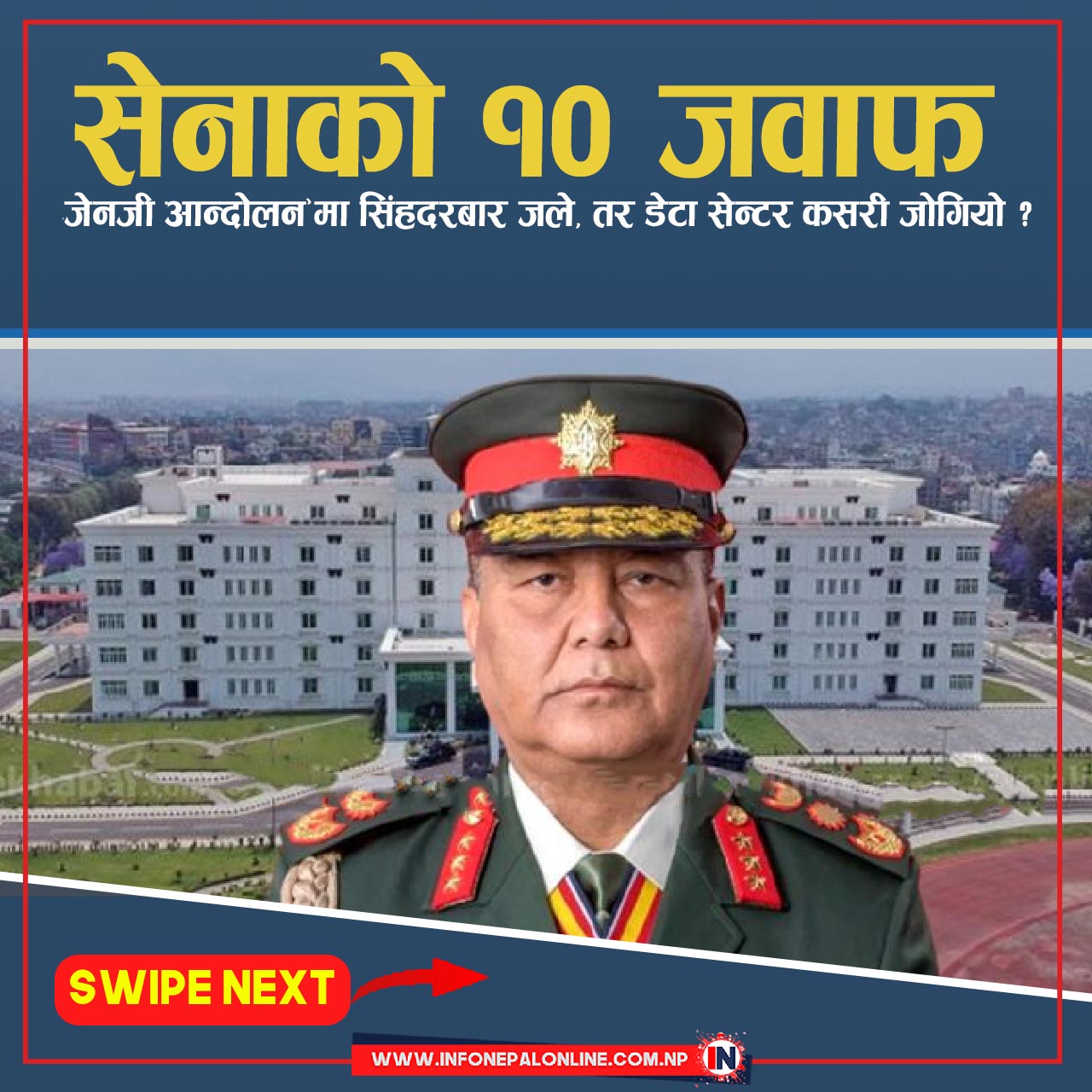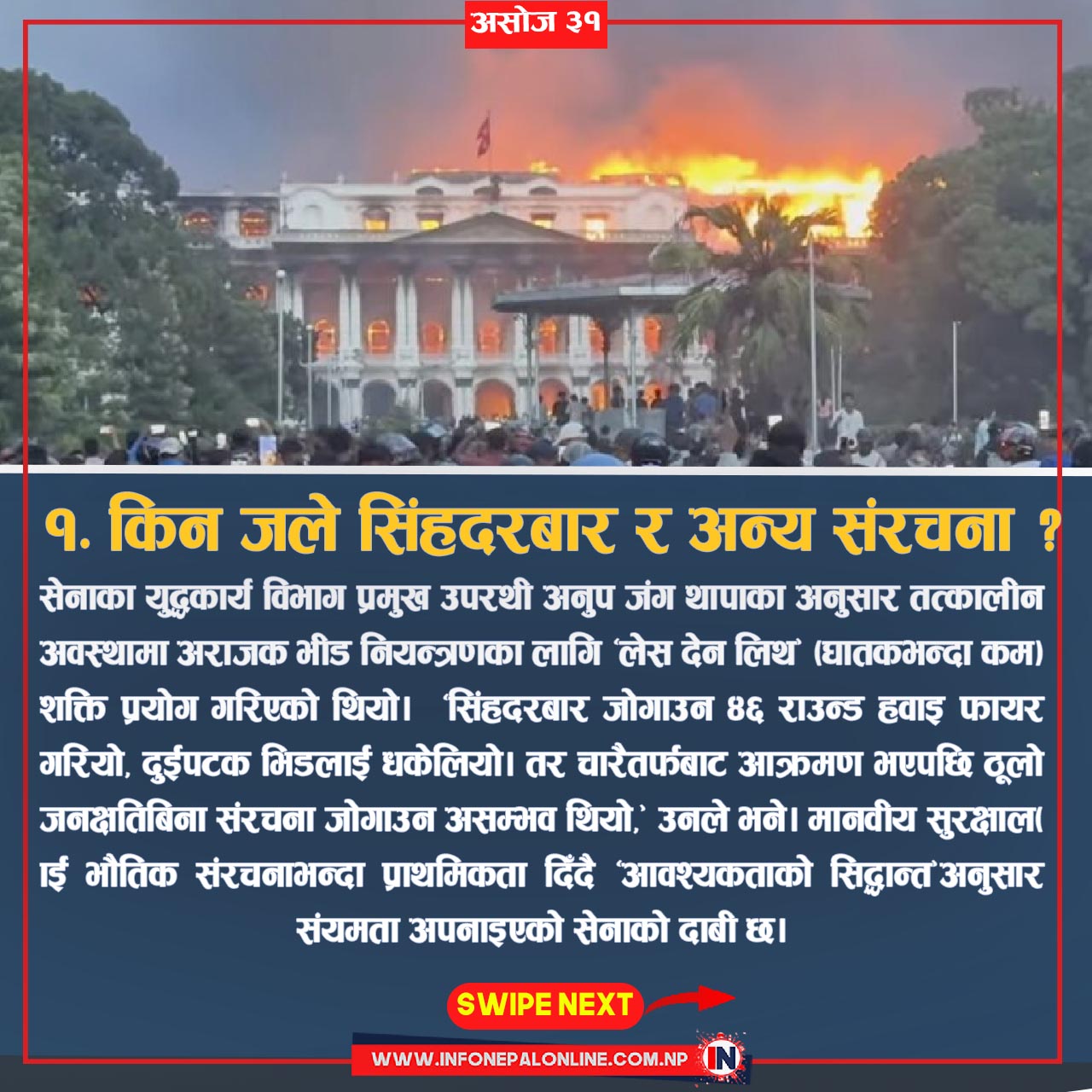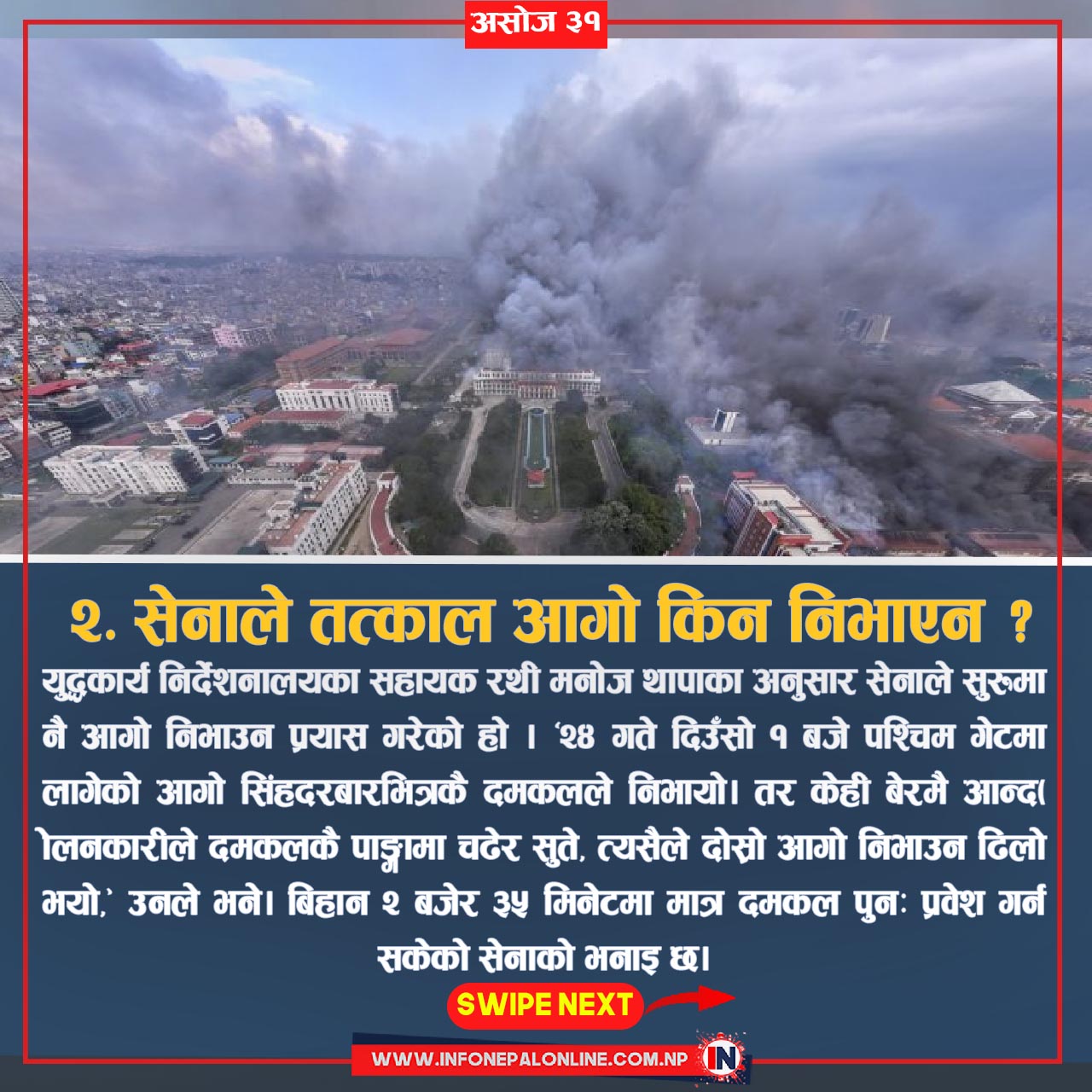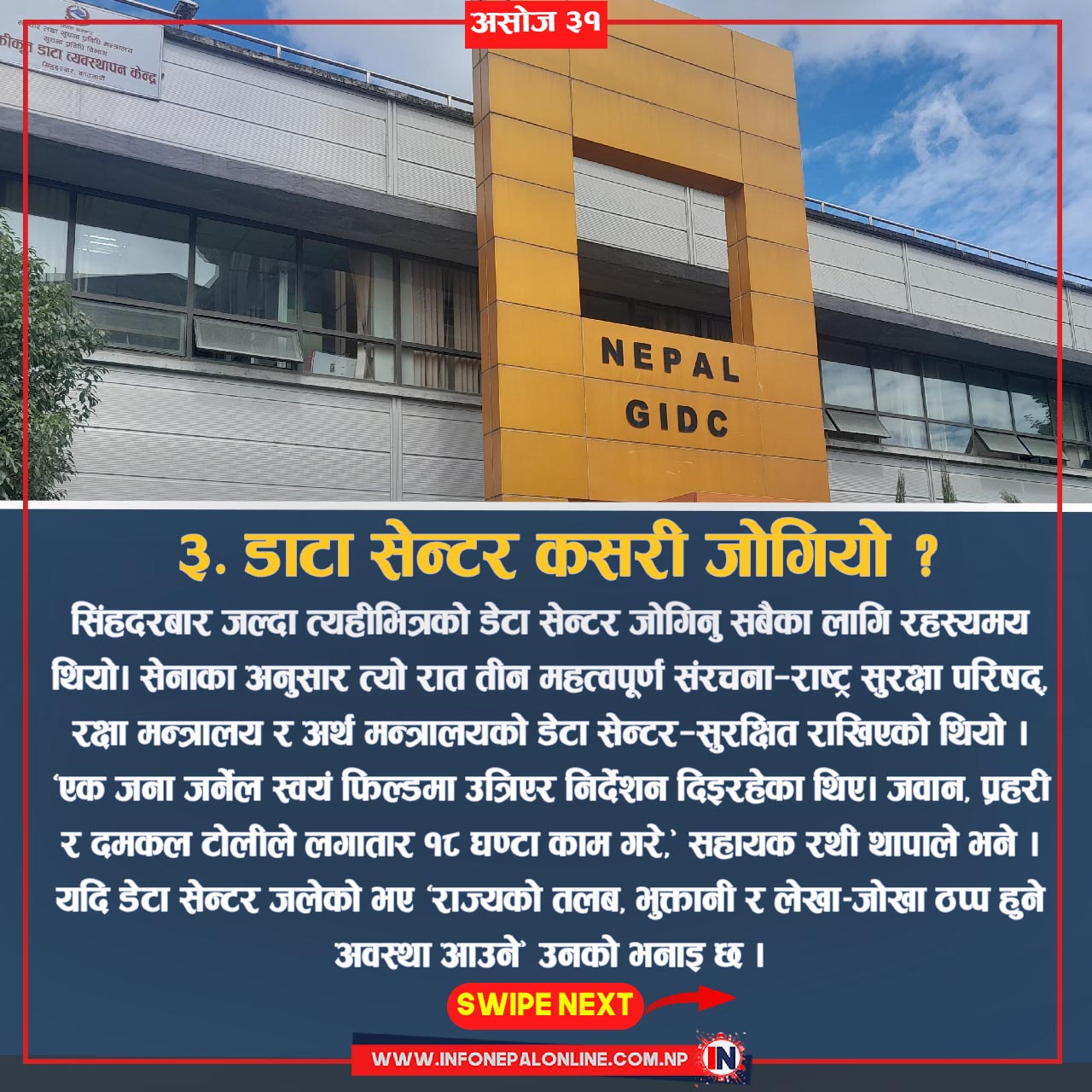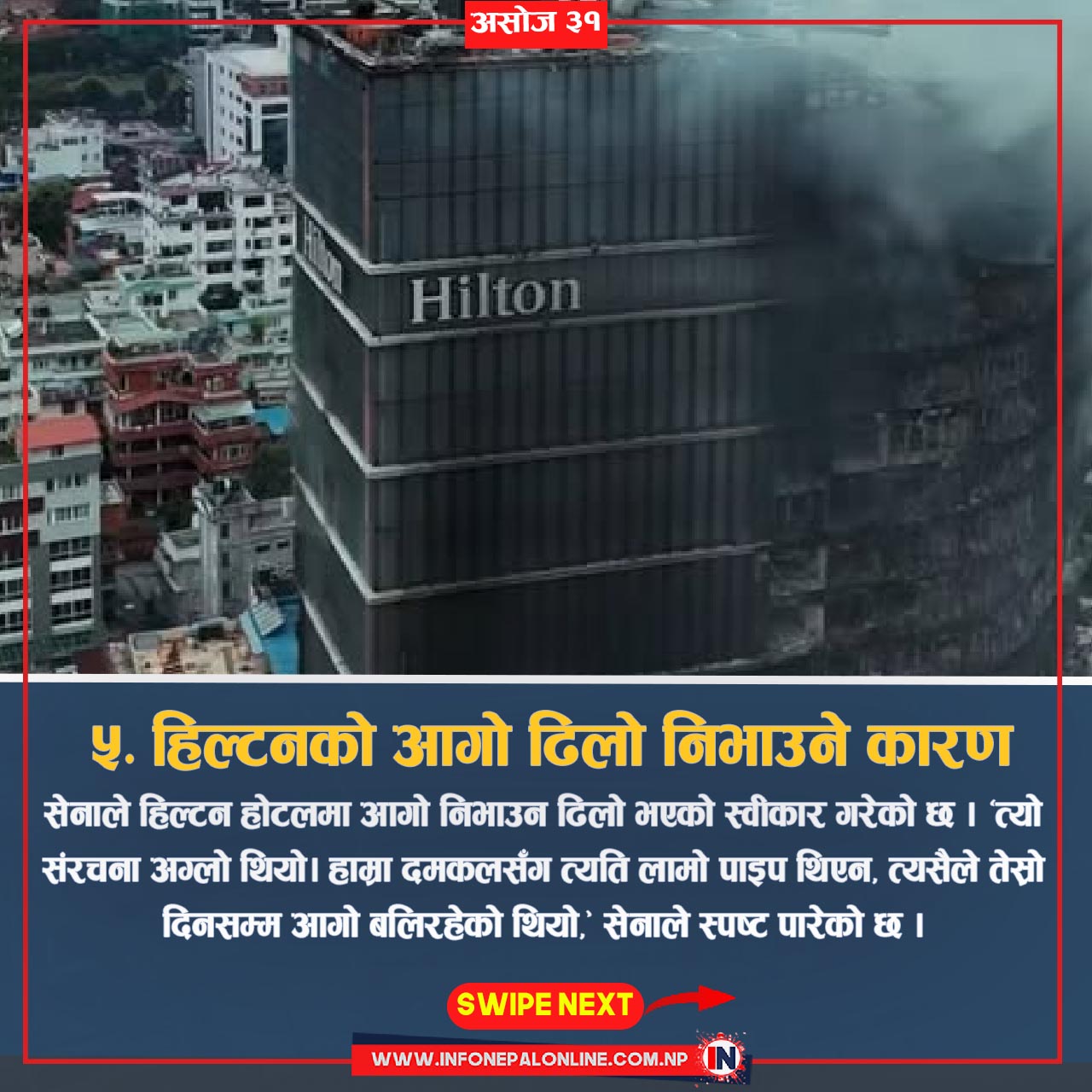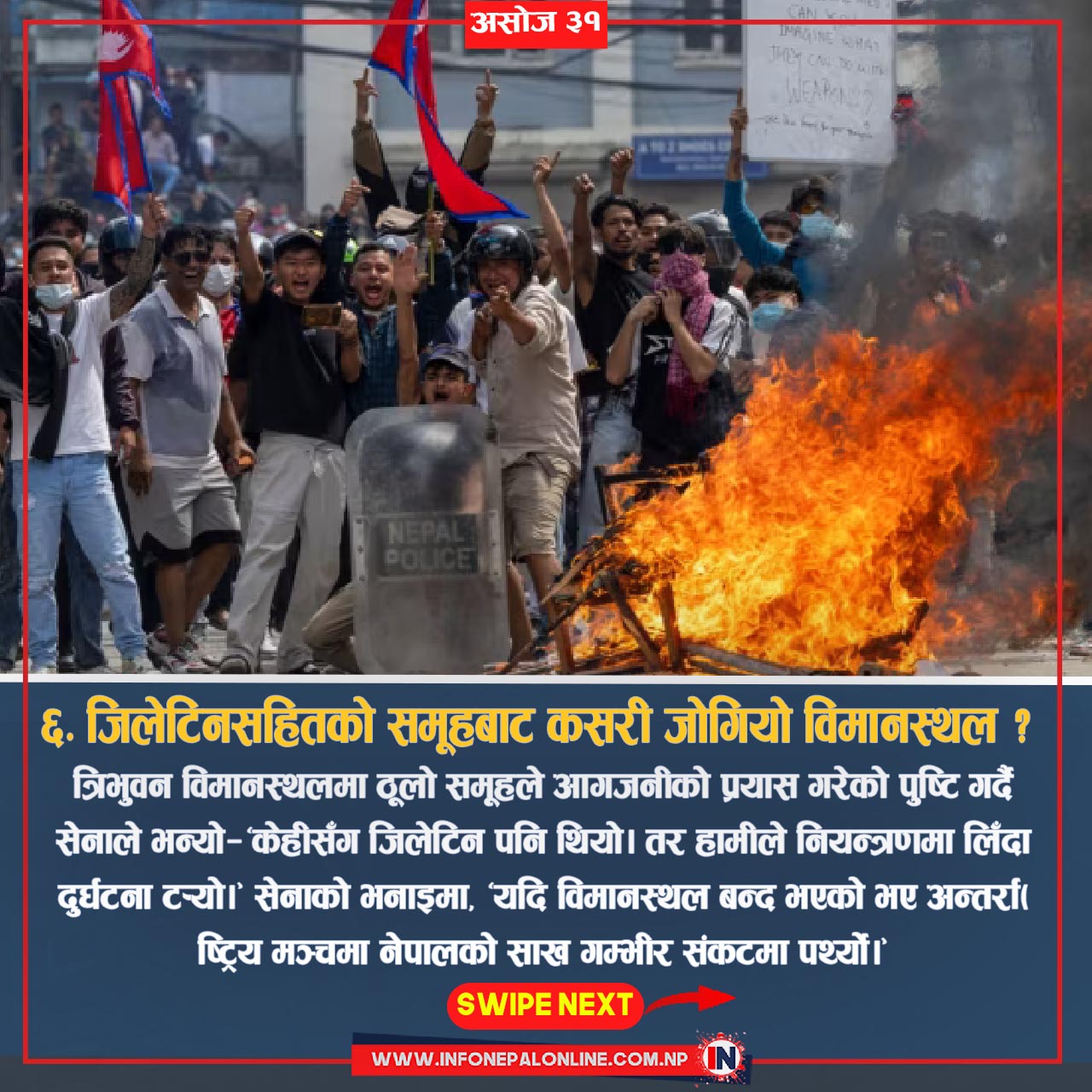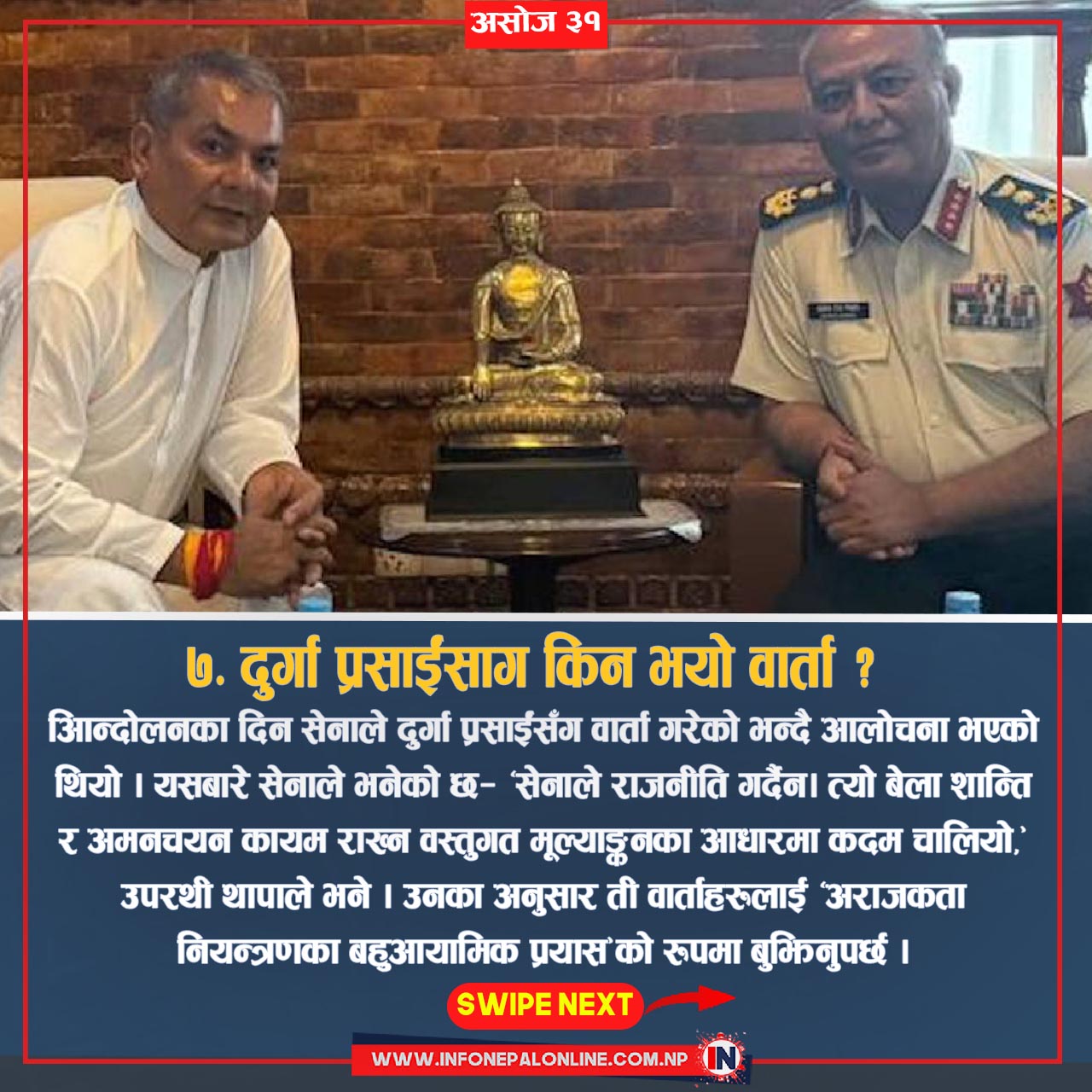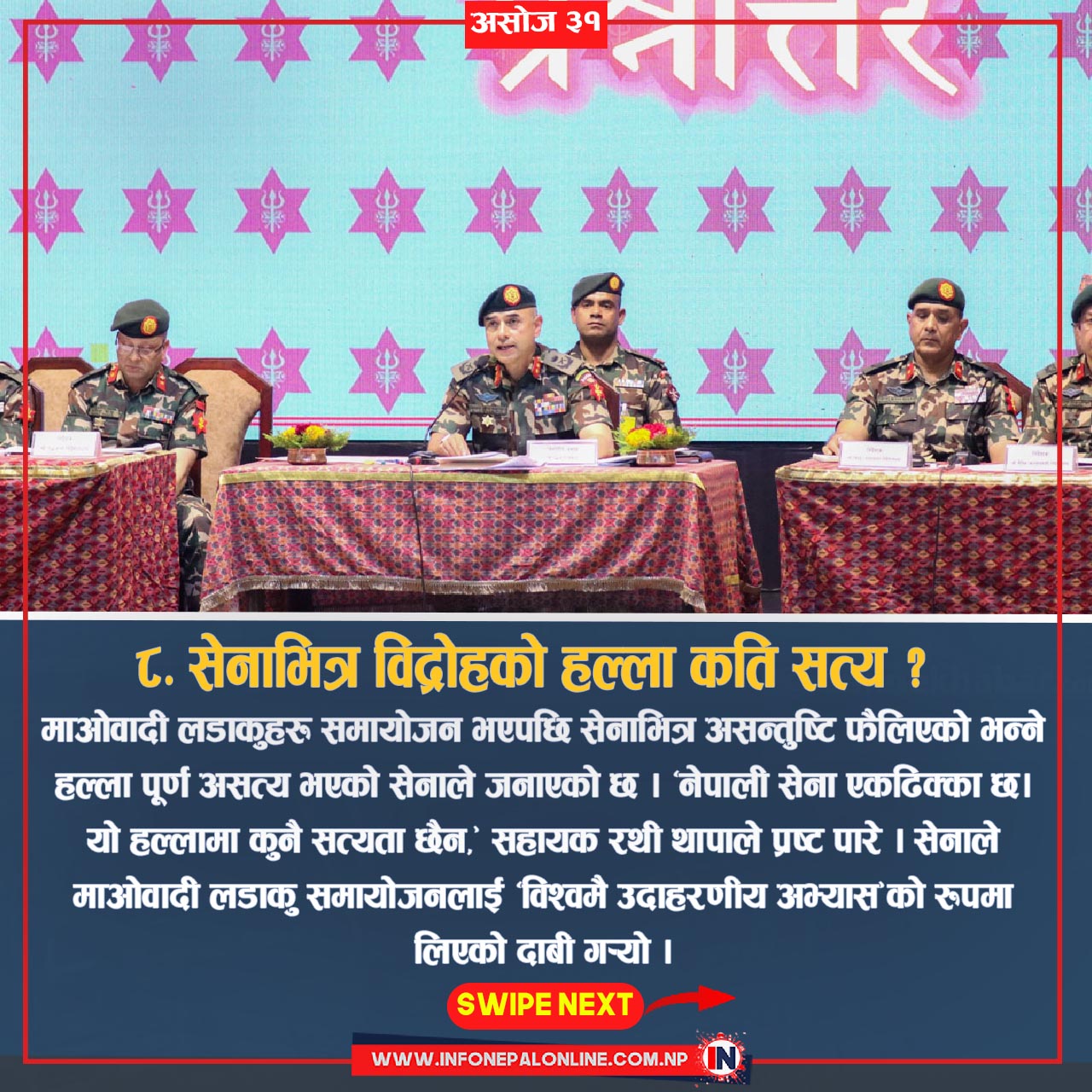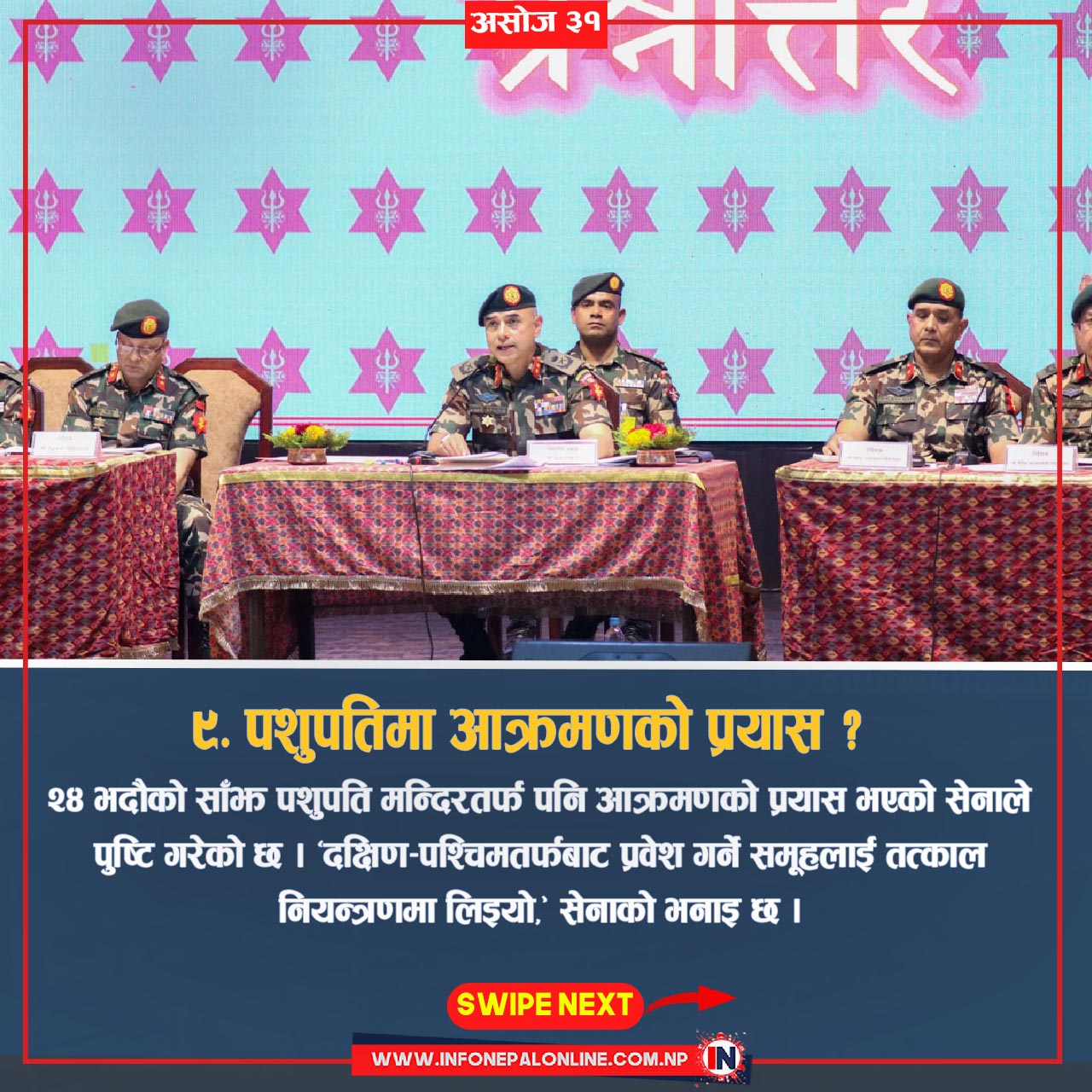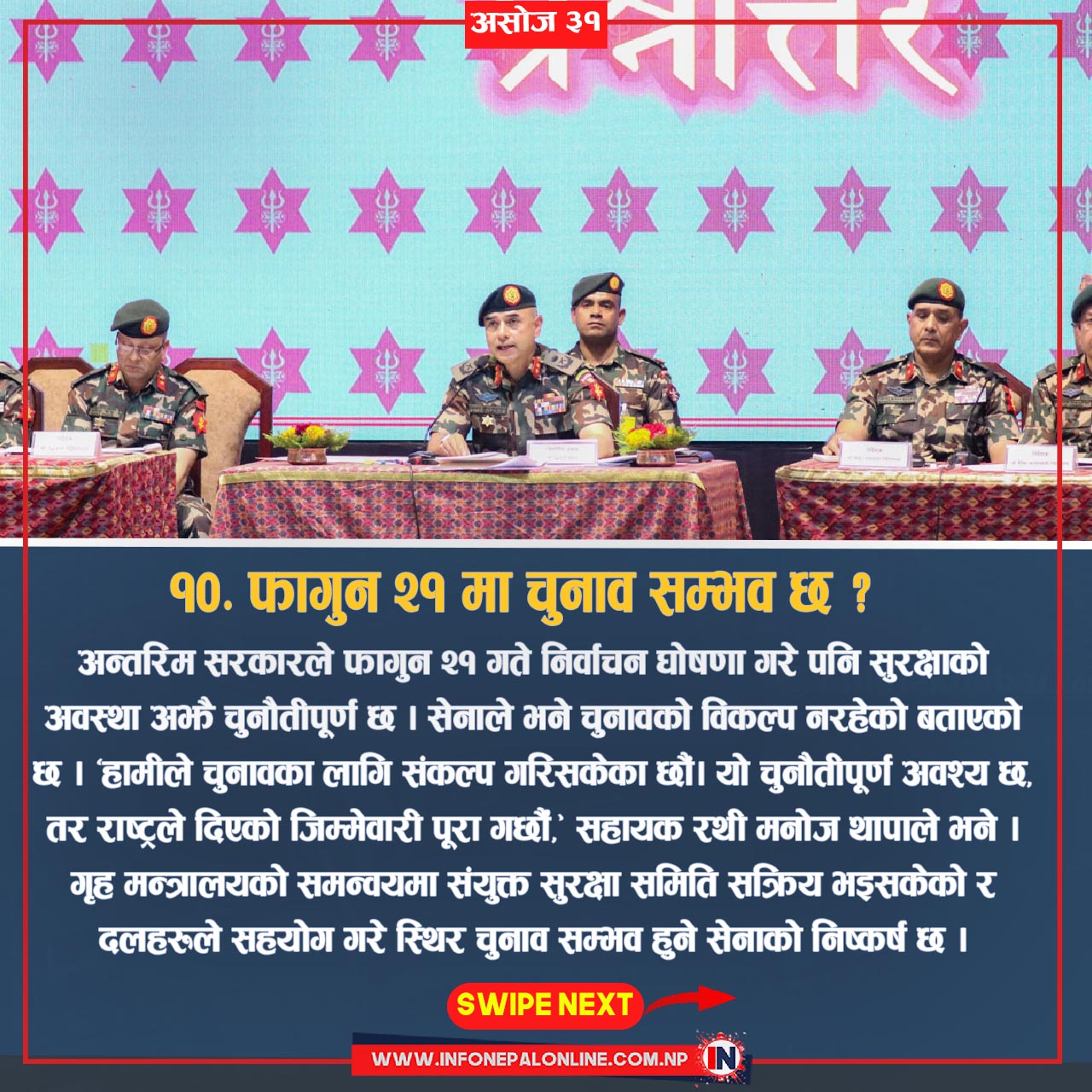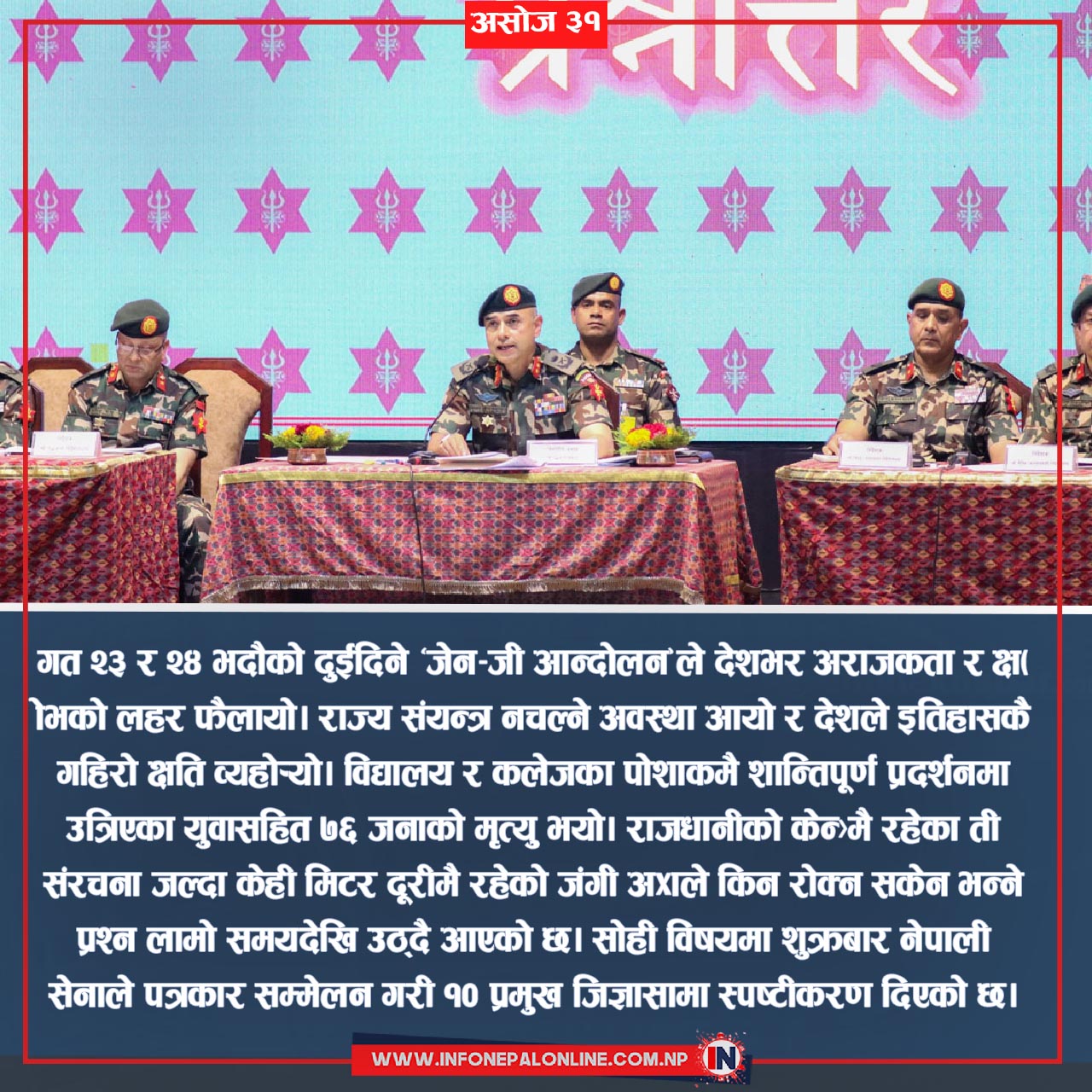The two-day “Gen-Z Movement” on September 8 and 9 (Bhadra 23–24) stunned the entire nation. For a brief moment, the country felt on the brink of a breakdown of state authority. Nepal faced an unprecedented tragedy seventy-six young people, many of them students in school and college uniforms who had joined peaceful demonstrations, lost their lives.
Prime Minister K P Sharma Oli, despite his two-thirds majority, was forced to resign, while former Prime Minister Sher Bahadur Deuba and then Foreign Minister Arzu Rana came under attack at their own residences. Party offices, police posts, and private homes of several leaders were reduced to ashes.
When Singha Durbar, the Supreme Court, and the Parliament Building were set on fire, why did the Army Headquarters only a few hundred meters away remain silent? That question has echoed in the public mind for the past five weeks.
On Friday, the Nepal Army held a press conference, addressing these long-standing questions. Here are the army’s answers to the ten key questions that emerged after the Gen-Z uprising.


